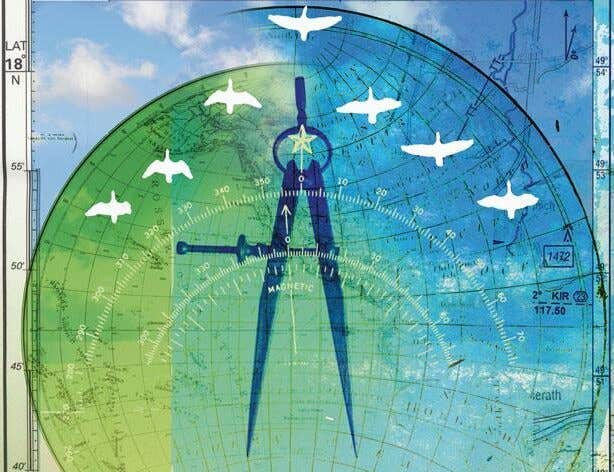Researchers discover the surprising cause of ozone pollution
Discover how winter ozone pollution challenges air quality norms, with insights from Lanzhou’s petrochemical-driven smog crisis.

Winter ozone pollution in industrial cities such as Lanzhou is uncovering unexpected chemical reactions—and highlighting the need for year-round strategies to improve air quality. (CREDIT: Getty Images)
Ozone pollution isn’t just a summer story anymore. In parts of northern China, high ozone levels are now appearing during winter—an alarming twist that defies decades of air quality science. This unusual pattern is most visible in the industrial city of Lanzhou, a major petrochemical center tucked between mountains in China’s northwest.
Traditionally, ozone spikes during hot weather when intense sunlight speeds up chemical reactions. These reactions involve pollutants like nitrogen oxides (NOx), volatile organic compounds (VOCs), and carbon monoxide (CO). Together, they form ozone, a pollutant known to irritate lungs and damage crops. But in recent years, that narrative has changed.
Cold months are no longer a guarantee of cleaner air. Lanzhou has recorded severe ozone pollution in winter, surprising scientists and public health officials alike. In January 2018, the city’s ozone levels shot past 100 parts per billion by volume (ppbv), peaking at a dangerous 121 ppbv—well above accepted safety limits.
These numbers mark a clear departure from past assumptions. Scientists now suspect a mix of industrial activity and weather conditions are driving this wintertime pollution. Lanzhou’s sprawling petrochemical facilities appear to be at the center of the problem, emitting large amounts of reactive gases even when sunlight is weak.
Similar patterns have emerged beyond Lanzhou. The Yellow River Delta and the heavily industrialized city of Shijiazhuang have also reported winter ozone surges. These events, described in Environmental Science and Ecotechnology, call for a rethinking of pollution control strategies that typically focus on the summer season.
Digging deeper into the data, researchers found one group of chemicals doing much of the damage: alkenes. These reactive hydrocarbons, released during petrochemical processing, played a central role. During the 2018 Lanzhou study, daytime levels of total non-methane VOCs averaged 153.4 ppbv. More than half of that came from alkenes alone.
What surprised scientists most was how little sunlight mattered. Even under cloudy skies and freezing air, ozone levels soared. That’s because alkenes can drive ozone formation through a process called ozonolysis—a chemical reaction that doesn’t need heat or sunshine.
In ozonolysis, alkenes react with ozone to produce unstable molecules called Criegee intermediates. These quickly break apart, releasing highly reactive radicals like OH, HO₂, and RO₂. These radicals, in turn, kick off a chain reaction that creates even more ozone. It’s a self-sustaining process, even in winter.
Related Stories
In Lanzhou, nearly 90% of the ozone measured during the winter spikes could be traced back to alkene ozonolysis. That’s an astonishing number. It challenges the long-held belief that strong sunlight is essential for ozone formation and suggests local industrial emissions play a far greater role than previously thought.
This discovery shifts the way researchers and policymakers think about smog. It’s no longer enough to focus on sunny months. In places like Lanzhou, where winter air can be just as polluted, controlling industrial emissions year-round has become critical to safeguarding health and the environment.
The specific alkenes driving this phenomenon include trans/cis-2-butene and propene, which are emitted in large quantities from Lanzhou’s petrochemical industry. These reactive hydrocarbons not only dominate the local chemical processes but also highlight the need for targeted emission controls in industrial regions.
Lanzhou’s geography amplifies its pollution woes. Situated in a basin surrounded by mountains, the city experiences poor air circulation. This natural barrier traps pollutants, creating conditions that exacerbate wintertime air quality issues. The dense emissions from the city’s petrochemical facilities further compound the problem.
Historically, ozone studies in Lanzhou have focused on summer, when high temperatures and sunlight dominate. However, the 2018 winter study revealed that weak solar radiation (averaging 263.6 watts per square meter) and low temperatures (–1.7°C) did not hinder ozone formation. Instead, these conditions, combined with high precursor emissions, led to severe pollution.
Moreover, the city’s reliance on heavy industry, coupled with increased energy demand during winter, contributes to elevated emissions of NOx and VOCs. These pollutants, under stagnant weather conditions, accumulate in the lower atmosphere, creating a perfect storm for ozone formation.
The findings from Lanzhou offer actionable insights for combating wintertime ozone pollution. Reducing alkene emissions by 28.6% or NOx levels by 27.7% during early afternoon hours could significantly lower ozone concentrations. These targeted strategies are critical for regions reliant on petrochemical industries.
"This study updates how we understand ozone pollution, proving that intense formation can occur in cold, low-light conditions," stated researchers Jin Yang and Yangzong Zeren. "Our findings complement conventional views and call for targeted action in industrial regions."
Advanced modeling played a pivotal role in these discoveries. Using a photochemical box model coupled with the Master Chemical Mechanism (PBM-MCM), researchers simulated ozone formation under Lanzhou’s unique conditions. This approach provided valuable insights into the chemical pathways and highlighted the role of Criegee intermediates in winter ozone production.
The implications extend beyond Lanzhou. Similar pollution patterns have been observed in other regions with heavy industrial activities, such as the Yellow River Delta and North China Plain. These findings emphasize the need for global attention to wintertime ozone pollution, particularly in industrial hubs.
The rise of wintertime ozone pollution underscores the complexity of air quality management. Traditional mitigation strategies often focus on reducing summer ozone levels, driven by assumptions about photochemical reactions. However, the Lanzhou study highlights the necessity of year-round monitoring and tailored interventions.
Industries must adopt cleaner technologies and reduce emissions of reactive hydrocarbons like alkenes. Policymakers should implement stricter regulations and promote research into alternative fuels and emission control technologies. Public awareness campaigns can also play a role in reducing pollution by encouraging responsible energy consumption and transportation practices.
The findings from Lanzhou also call for greater international collaboration. As industrial activities grow and climate conditions shift, understanding the nuances of ozone formation becomes increasingly critical. Joint research initiatives can help identify global hotspots of winter ozone pollution and develop effective mitigation strategies.
Wintertime ozone pollution is a stark reminder of the evolving challenges in environmental science. While summer smog remains a significant concern, the emergence of cold-weather ozone highlights the need for comprehensive, year-round solutions.
The lessons from Lanzhou provide a roadmap for addressing these challenges and ensuring cleaner, healthier air for all.
Note: Materials provided above by The Brighter Side of News. Content may be edited for style and length.
Like these kind of feel good stories? Get The Brighter Side of News' newsletter.



